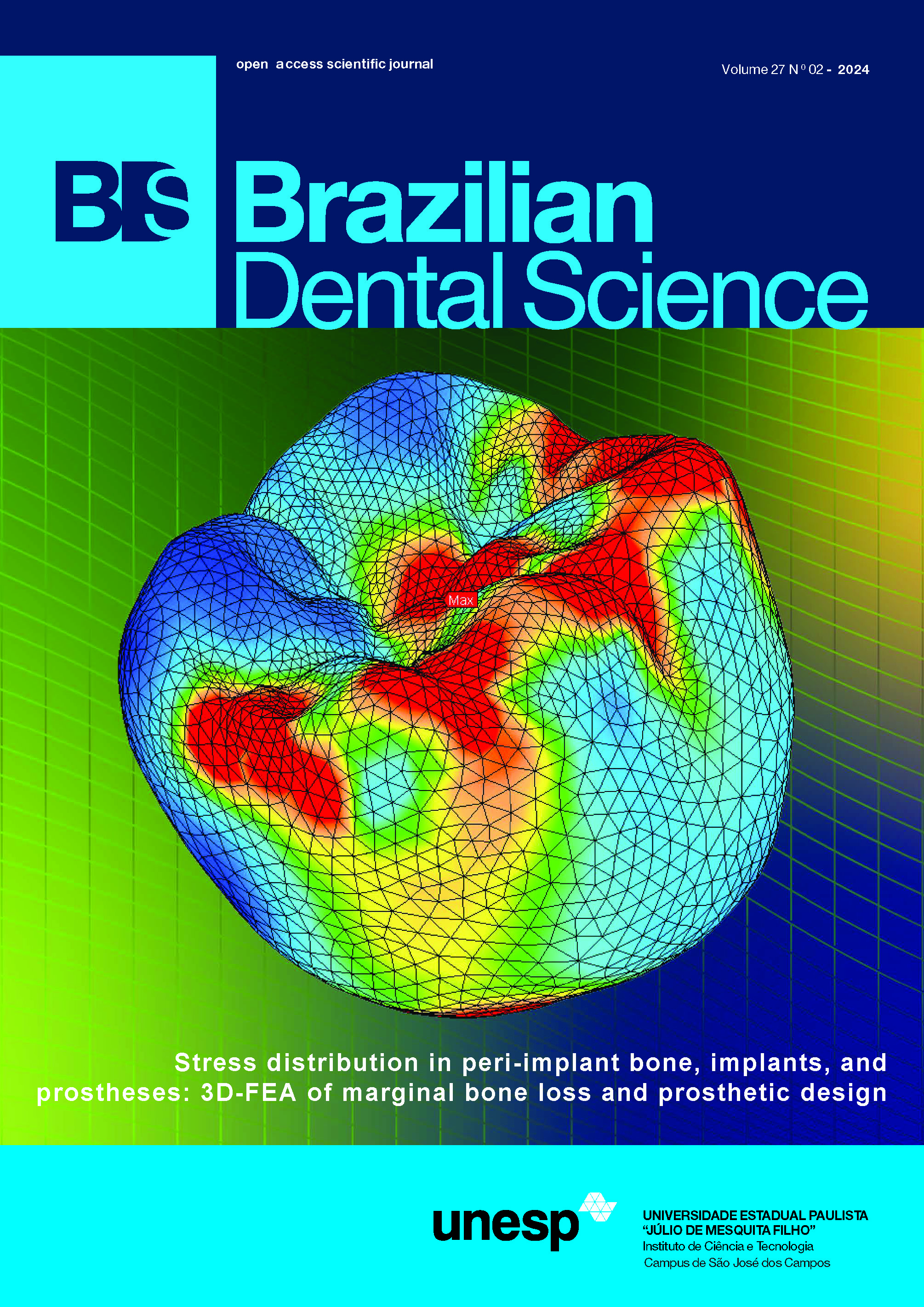Evaluation of different methods of calcium hydroxide removal from root canals with simulated internal resorptions
DOI:
https://doi.org/10.4322/bds.2024.e4198Abstract
Objective: This study evaluated different methods of calcium hydroxide (CH) removal from root canals with simulated internal resorptions using microcomputed tomography (micro-CT). Material and Methods: Sixty acrylic resin blocks with simulated root canals and internal resorptions were prepared using a Reciproc R25 file and then filled with CH. The blocks were divided into five test groups (n=12) according to the method used for CH removal: hand files (HF), Easy Clean (EC), passive ultrasonic irrigation (PUI), XP-Endo Finisher (XP), XP-Endo Finisher + PUI (XP+PUI). The blocks were scanned using a SkyScan 1172 scanner before and after CH removal to measure the volume and percentage of CH removal. The OriginPro 2017 software was used for statistical analyses. The level of significance was set at p<0.05 for all tests. Results: No method under study removed all CH. All methods had similar results in the cervical third (P>0.05). The percentage of CH removal was significantly greater in the area of internal resorption and along the total length of the canal in the XP+PUI group (P<0.05). The best results of CH removal were found in the apical third of roots in the XP+PUI and PUI groups (P>0.05). Conclusion: No method removed all CH from the root canals, but the combined XP+PUI method removed more CH than the other methods, especially from the area of the internal resorption.
KEYWORDS
Calcium hydroxide; Dental instruments; Dental pulp cavity; Root resorption; X-ray microtomography
Downloads
Published
How to Cite
Issue
Section
License
Brazilian Dental Science uses the Creative Commons (CC-BY 4.0) license, thus preserving the integrity of articles in an open access environment. The journal allows the author to retain publishing rights without restrictions.
=================




























